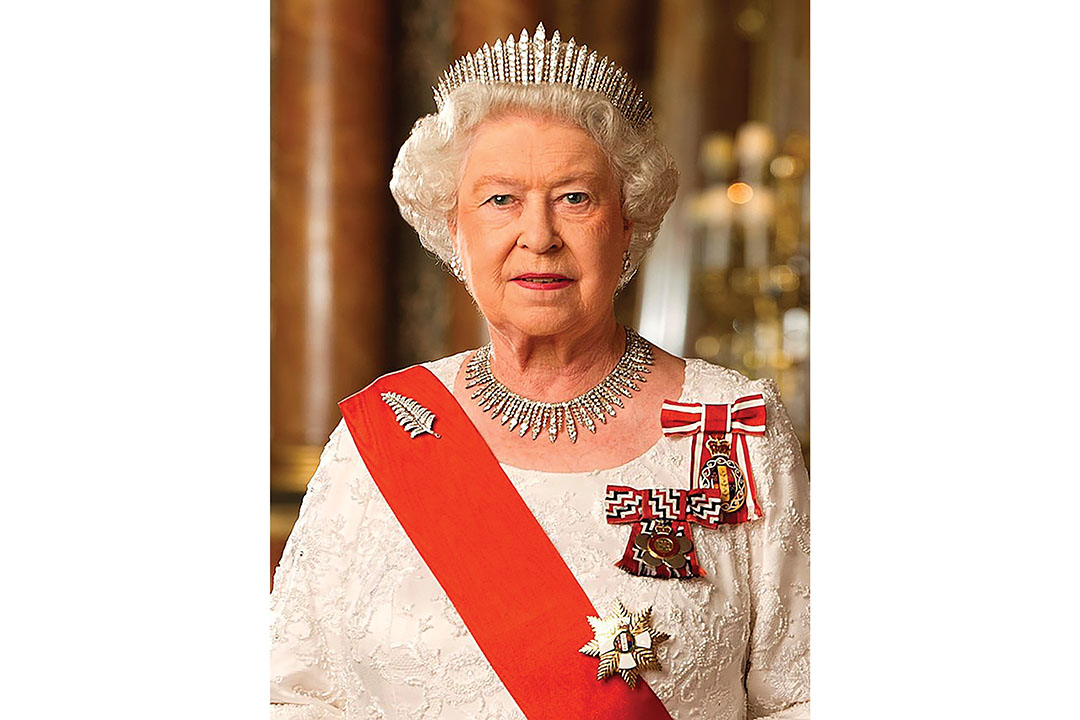On September 8, the second Elizabethan era came to an end. The death of the remarkable woman who served as Canada’s Queen for over 70 years, Her Majesty Queen Elizabeth II, is at the same time long-expected and shocking. There’s no question that her reign left a mark on the modern history of this country, from her 22 separate Royal homecomings to her support of Canadian prime ministers and many charitable causes. Above all, she was involved in some of the greatest moments of Canadian national history, especially when she proclaimed the repatriated Canadian Constitution on Parliament Hill in 1982.
Her presence within a host of communities and on diverse occasions made each more important and dignified, from simple commemorative events in small-town Canada to monumental undertakings like the opening of the 1976 Olympic Games in Montreal. Twelve prime ministers served under the Queen, but most remarkably, almost half of Canada’s modern history — beginning in the latter half of the twenty-first century — has passed during her service to our country, and most Canadians today have known no other monarch.
The Queen was no stranger to profound change, as the British Empire came to an end during her reign, and a post-colonial world rose. As British rhetoric and its views of the then-colonies evolved, so did the terms and tone that the monarchy under our late Queen used toward them. Government structures evolved and changed both here in Canada and abroad, taking a step back from their colonial beginnings, or changing entirely.
During her reign, the Queen looked to the promise of an equal Commonwealth of Nations, of which she was head, not by mandate, but by choice of the individual members. King Charles III, the new King, by consent of each of the Commonwealth nations, continues in her footsteps as Head. Citizens of 56 independent countries are today Commonwealth citizens, from countries as diverse as Malaysia, Malta, India, Australia, Tonga, and South Africa.
She reigned as a true model of a constitutional monarch: an apolitical figure, never expressing partisan preferences, but instead offering words of encouragement or unity to her public when they needed it most. This congenial nature she exhibited most famously at her annual Christmas message, which millions of Canadians and others around the world tuned into. Her encouraging nature was also evident in her message during the COVID-19 pandemic. The very last official act of self-giving she performed during her life was for Canada; just hours before her death, the Queen sent a message of concern to Saskatchewan residents in the wake of the recent horrific stabbings at James Smith Cree Nation and across the province.
A little closer to home, the mark of such a monumental reign can still be felt. The Queen visited Toronto seven times and visited U of T four times in 1951, 1973, 2002, and 2010.
The University of Toronto is home to one of the few Royal Chapels in this country, found inside Massey College on Devonshire Place. Granted by special permission of Her late Majesty on National Indigenous Peoples’ Day in 2017, the Chapel Royal — known as Gi-Chi-Twaa Gimaa Kwe Mississauga Anishinaabek AName Amik, which means “The Queen’s Anishinaabek Sacred Place” — stands as one testament to the Queen’s dedication to joining Canadians, settler and non-settler, on the journey to reconciliation. A Truth and Reconciliation call to action inspired the designation of this chapel as a Royal Chapel. The Missisauguas of the New Credit First Nation supported this designation.
Of course, the legacy of British colonialism still looms over Canada’s history. There are many historical wrongs that need to be rectified and openly discussed, especially the relationship between Indigenous Canadians and the government, as our Governor General Mary Simon, the first Indigenous person to occupy that high office, recently discussed with the BBC. However, as the Governor General recently said, the installation of the new King allows for a “renewed beginning.”
The relationship between the Crown and Indigenous people is complex and most definitely needs amelioration. However, when the then-Duke and Duchess of Cambridge visited Canada in 2016, the former National Chief of the Assembly of First Nations, Perry Bellegarde, affirmed that Indigenous people “hold the Crown and the monarchy in high regard” on a nation-to-nation basis. Reconciliation will continue to be the work of both the new King and the governments that we elect.
I believe that the late Queen left an indelible mark on us all. When I reflect on her 70-year reign, she remained a stabilizing force and a constant comfort for millions of Canadians and billions around the world, and, in joy or in sorrow, fulfilled her oath that she made on her 21st birthday in 1947: that she would serve her whole life in our service, whether her life be long or short. If anyone was an example of duty, constancy, and self-sacrifice, the late Queen was.
We now turn to a new age, and I believe that the King has won his spurs on a host of issues, especially environmental issues. As an example, he was mentioning climate change as an urgent issue as far back as 2007. As King, I see his duty now is to remind us that what we all agree upon are much greater than the things that divide us as a nation and as a Commonwealth of nations, a good lesson for our unsettling times. Despite the new successor to the throne, I still believe that the Canadian Crown, unlike our Queen, remains eternal. It just now sits on the head of a new monarch: King Charles III of Canada.
Logan Liut is a second year ethics, society, & law and European affairs student at Victoria College. He helps lead the Monarchist League of Canada on a national level.


